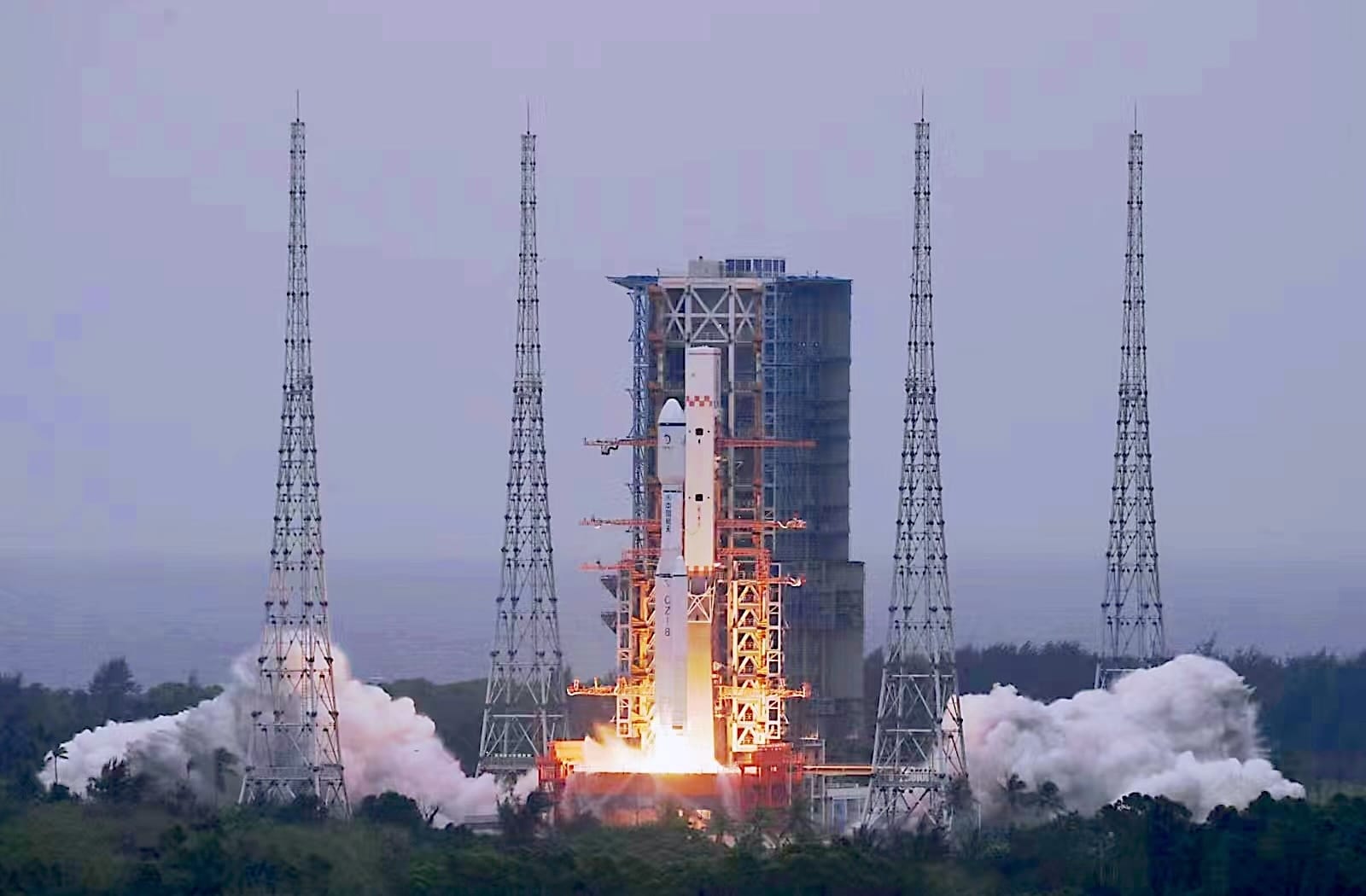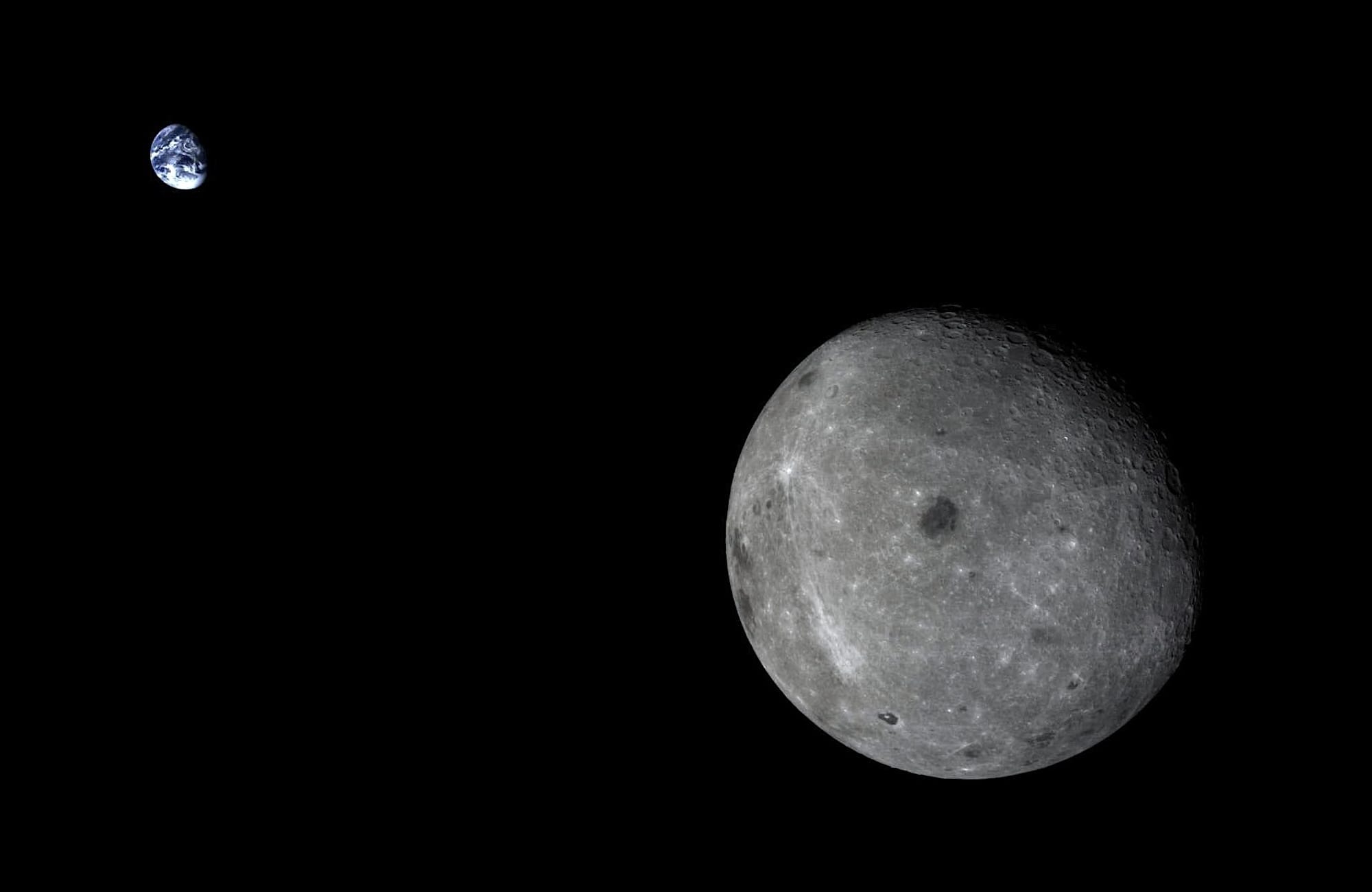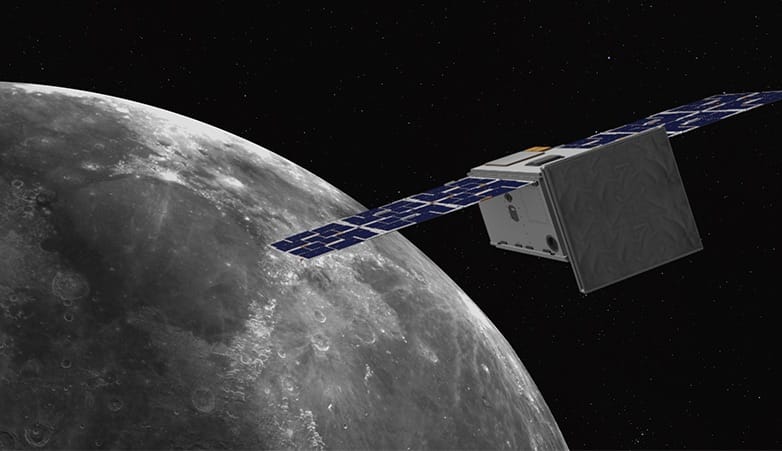Moon Monday #169: Queqiao 2 and South Korea leap for the Moon, and more mission updates
China doubles down on lunar infrastructure with the launch and orbital insertion of Queqiao 2

On March 20 at 00:31 UTC, China’s Long March 8 rocket launched the 1200-kilogram Queqiao 2 lunar communications relay satellite on a Moon-ward trajectory with an orbit of 200 by 420,000 kilometers. Andrew Jones reports that Queqiao 2 entered an elliptical orbit around the Moon on March 24. With its 4.2-meter wide parabolic antenna, Queqiao 2 will relay communications between Earth and China’s upcoming Chang’e 6 sample return craft on the Moon’s farside.
The four key modules of the 8200-kilogram Chang’e 6 Mooncraft arrived at China’s Wenchang spaceport in January, with CNSA aiming for launch on a Long March 5 rocket this May to bring about two kilograms of samples from the Apollo impact crater on the Moon’s farside. These samples should be scientifically even more valuable than the Chang’e 5 samples as it would be our first tactile window into our Moon’s mysterious farside.
In contrast, the first Queqiao relay satellite has been halo-orbiting the Earth-Moon Lagrangian point #2 and relaying communications for the farside Chang’e 4 mission since 2018. With Queqiao aging, China will utilize Queqiao 2 for Chang’e 4 as needed. CNSA expects Queqiao 2 to orbit the Moon stably for eight years. It will also relay communications for the upcoming Change’e 7 & 8 landers, currently targeting launch in 2026 and 2028 respectively. As Zhang Tong reported previously, the Queqiao 2 launch also carried two experimental Tiandu CubeSats. They entered lunar orbit too, and will soon test and verify technologies to feed into the Queqiao constellation, China’s upcoming lunar navigation & communications service similar to ESA’s Moonlight project.
Queqiao 2 could also provide communications support for China’s first crewed Moon landing, currently targeting a launch by 2030, as well as to other Moonbound spacecraft from international partners. Chang’e 7, Chang’e 8, and the first Chinese crewed Moon mission are all part of the first phase of the upcoming China-led long-term scientific Moonbase called the International Lunar Research Station (ILRS). It’s been rumored that Chang’e 7 or 8 will deploy another navcom orbiter to join Queqiao 2 and begin expanding the constellation.
The Planetary Society notes that Queqiao 2 has some key science goals too:
Queqiao-2 will also carry three science payloads. These will play a part in the overall science goals of the multi-spacecraft Chang’e-7 mission. The Energetic Neutral Atom Imager for Earth’s magnetotail imaging (GENA) and the Extreme Ultraviolet Camera for Earth’s plasmasphere observation (EUC) will study Earth's magnetotail and plasmasphere, and how the solar wind interacts with the Earth's magnetosphere and the ionosphere.
A Moon-Earth very-long-baseline interferometry (VLBI) measurement and observation experiment (LOVEX) is also included, designed to improve the accuracy of determining the orbits of spacecraft in deep space. It will create a 400,000-kilometer (250,000-mile) baseline between Queqiao-2 and radio telescopes on Earth. The experiment will also carry out radio astronomical observations and test capabilities for astrophysics and astrometry, making precise measurements of stars’ locations in the sky.

Many thanks to Epsilon3, Joseph Biernat and Dany Waller for sponsoring this week’s Moon Monday. If you love this community resource too, join them!
CAPSTONE continues extended Moon mission

The NASA-funded and Advanced Space-led CAPSTONE lunar orbiter continues its extended mission. Earlier this month, the spacecraft demonstrated—with simulated data sent by the mission team—an advanced ability to detect and classify system anomalies using machine learning. These tests are part of a broader push for autonomous operations of spacecraft in lunar orbit.
This year CAPSTONE has continued to cross-communicate with NASA’s Lunar Reconnaissance Orbiter (LRO) to demonstrate autonomous navigation in lunar orbit, that is, without relying on Earthly ground stations. Being able to autonomously determine position and navigation states means future lunar satellites can operate more efficiently by not blocking as much of the precious but limited bandwidth of NASA’s Deep Space Network or other such ground stations.
Relatedly, NASA funded Advanced Space last year to develop a mission design and planning tool which will increase the autonomy and safety of lunarbound spacecraft along various trajectories. This tool would also benefit crewed missions such as those under Artemis. Another way CAPSTONE is proving useful to NASA is it’s test-flying the same fuel-efficient Near-Rectilinear Halo Orbit to be flown by the NASA-led international Gateway lunar orbital habitat later this decade. The CAPSTONE team has published some papers to that end.
South Korea leaps for the Moon

Celestial Citizen notes that South Korea is ramping up its space funding with an eye on landing a robotic spacecraft on the Moon in 2032 using indigenous technologies. This move comes as the country is finally forming a dedicated space agency in May called the Korea Aerospace Administration (KASA), which will be distinct from the already existing Korea Aerospace Research Institute (KARI) leading the country’s first lunar orbiter KPLO.
As Kim Na-young previously reported, South Korea’s Moon lander project passed a preliminary feasibility study last October, and will officially begin this year with a budget of $393 million. The tentative plan is to make an ~1800-kilogram robotic lander. A rover will be onboard the lander alongside other instruments. KPLO has been capturing beautiful high resolution images—see Tsiolkovskiy and Szilard M—and South Korea will use these along with LRO ones to help identify good landing site candidates for the Moon landing mission.
South Korea has also developed a full-scale dirty thermovac chamber that accurately simulates the dynamic electrostatic environment on the Moon’s surface. Such facilities not only let scientists test the functioning of full-scale hardware in lunar-like environments but help them understand how to mitigate long term damage to lunar hardware and astronaut suits from notorious moondust. Relatedly, China opened up a Lunar Simulation Chamber last month.
More mission updates
- Jeff Foust reports that Intuitive Machines’ second Moon mission part of NASA’s CLPS program could slip from its November launch to next year due to the agency considering moving the landing location further down south in hopes of accessing water ice—the primary goal of the mission for NASA.
- Late last year ESA released a call for proposals for small Moon missions under €50 million to fly before end of decade to meet parts of ESA’s exploration and science goals. Evan Gough reports one proposal that came in is a small lunar leaper bot that will jump around and explore lunar lava tubes. Previously, ESA was considering a 2033 mission to explore a lunar pit that has an opening to a lava tube but with no updates in over a year, the project seems to be on a halt.
- Astrobotic hired four former leading NASA figures in key engineering and advisory roles ahead of its critical Griffin lander launch contracted by NASA to deliver the agency’s water-studying VIPER rover to the Moon’s south pole. Astrobotic’s failed first lunar mission in January will certainly induce delays in VIPER’s launch.
More Moon

- Eric Berger reports that following DARPA’s selection of 14 companies in December 2023 to conduct lunar infrastructure studies as part of the 10-year Lunar Architecture study (LunA-10) on how best to build key commercial infrastructure pieces for sustaining human presence on the Moon, the defense organization now seeks more information from companies in six key technology areas: centralized heating and cooling hubs, efficient bulk lunar regolith processing to extract low abundance minerals, low-altitude satellites for better resource prospecting, silicon wafer manufacturing that taps into ISRU infrastructure, microbial biomanufacturing and recycling, and a GPS-like lunar positioning system. Related tangent: Northrop Grumman says DARPA is further funding their LunA-10 study of a lunar railroad network to transport humans, supplies, and resources.
- Apollo 10 commander and peacemaker in the Apollo-Soyuz mission Thomas Stafford passed away at 93.
- Sponsored listing: Open Lunar Foundation is hiring a Program Coordinator to schedule and administer the organization’s many project pipelines, liaison with Open Lunar fellows and project leads, support the community, and aid with research and documentation. Apply here by April 18.
